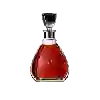
Domaine du TraginerBanyuls Ambré Doux Naturel
This wine generally goes well with poultry, beef or rich fish (salmon, tuna etc).
Food and wine pairings with Banyuls Ambré Doux Naturel
Pairings that work perfectly with Banyuls Ambré Doux Naturel
Original food and wine pairings with Banyuls Ambré Doux Naturel
The Banyuls Ambré Doux Naturel of Domaine du Traginer matches generally quite well with dishes of beef, rich fish (salmon, tuna etc) or shellfish such as recipes of fleischnacka leaf, lemon and tuna risotto or lamb curry indian style.
Details and technical informations about Domaine du Traginer's Banyuls Ambré Doux Naturel.
Discover the grape variety: Arriloba
The white Arriloba is a grape variety that originated in . It produces a variety of grape specially used for the elaboration of wine. It is rare to find this grape to eat on our tables. This variety is characterized by medium-sized bunches and small grapes. White Arriloba can be found in several vineyards: South West, Cognac, Bordeaux, Loire Valley, Provence & Corsica, Languedoc & Roussillon, Rhone Valley, Armagnac.
Informations about the Domaine du Traginer
The Domaine du Traginer is one of of the world's greatest estates. It offers 17 wines for sale in the of Banyuls to come and discover on site or to buy online.
The wine region of Banyuls
Banyuls wines come from the South-eastern Part of Roussillon, in the south of France, in the lower Pyrenees, a few kilometres from the Spanish border. These naturally Sweet wines are consumed both as an aperitif and as a dessert. They come in a wide range of hues, from GoldenGreen (Banyuls Blanc) to Amber (Banyuls Ambré) to the intense garnet of the standard Banyuls Rouge. Unusually among the natural sweet wines of France, all Banyuls wines are made primarily from Grenache grapes of various colors.
The wine region of Languedoc-Roussillon
Languedoc (formerly Coteaux du Languedoc) is a key appellation used in the Languedoc-Roussillon wine region of southern France. It covers Dry table wines of all three colors (red, white and rosé) from the entire region, but leaves Sweet and Sparkling wines to other more specialized appellations. About 75% of all Languedoc wines are red, with the remaining 25% split roughly down the middle between whites and rosés. The appellation covers most of the Languedoc region and almost a third of all the vineyards in France.
News related to this wine
An overview of the Rully appellation
The Bourgogne Wine Board (BIVB) invites you to a survey above the vineyard of Rully. Situated at the end of the Côte de Beaune region, it marks the begining of the côte chalonnaise with such a diversity of landscapes. Our social media: Facebook: https://www.facebook.com/BourgogneWines Twitter: https://twitter.com/BourgogneWines/ Instagram: https://www.instagram.com/vinsdebourgogne/ LinkedIn: https://www.linkedin.com/company/bivb Find out more on our website: https://www.bourgogne-wines ...
At the heart of the terroirs of Mâcon-Péronne
Sequence from the video « At the heart of the Mâcon terroir » which offer a stroll at the heart of the Mâcon terroir. It offers a focus on Mâcon-Péronne, one of the 27 geographical denominations of the Mâcon appellation. Travel through the terroirs of the Mâcon appellation by watching the full video : https://www.youtube.com/watch?v=GF20y1aBZh8 Both are availablein French and English. Our social media: Facebook: https://www.facebook.com/BourgogneWines Twitter: https://twitter.com/BourgogneWine ...
At the heart of the terroirs of Mâcon-Chardonnay
Sequence from the video « At the heart of the Mâcon terroir » which offer a stroll at the heart of the Mâcon terroir. It offers a focus on Mâcon-Chardonnay, one of the 27 geographical denominations of the Mâcon appellation. Travel through the terroirs of the Mâcon appellation by watching the full video : https://www.youtube.com/watch?v=GF20y1aBZh8 Both are available in French and English. Our social media: Facebook: https://www.facebook.com/BourgogneWines Twitter: https://twitter.com/Bourgogne ...
The word of the wine: Guyot (pruning)
This is the most widespread pruning technique. It includes one or two long branches and allows the mechanization of a large number of vineyard operations.














